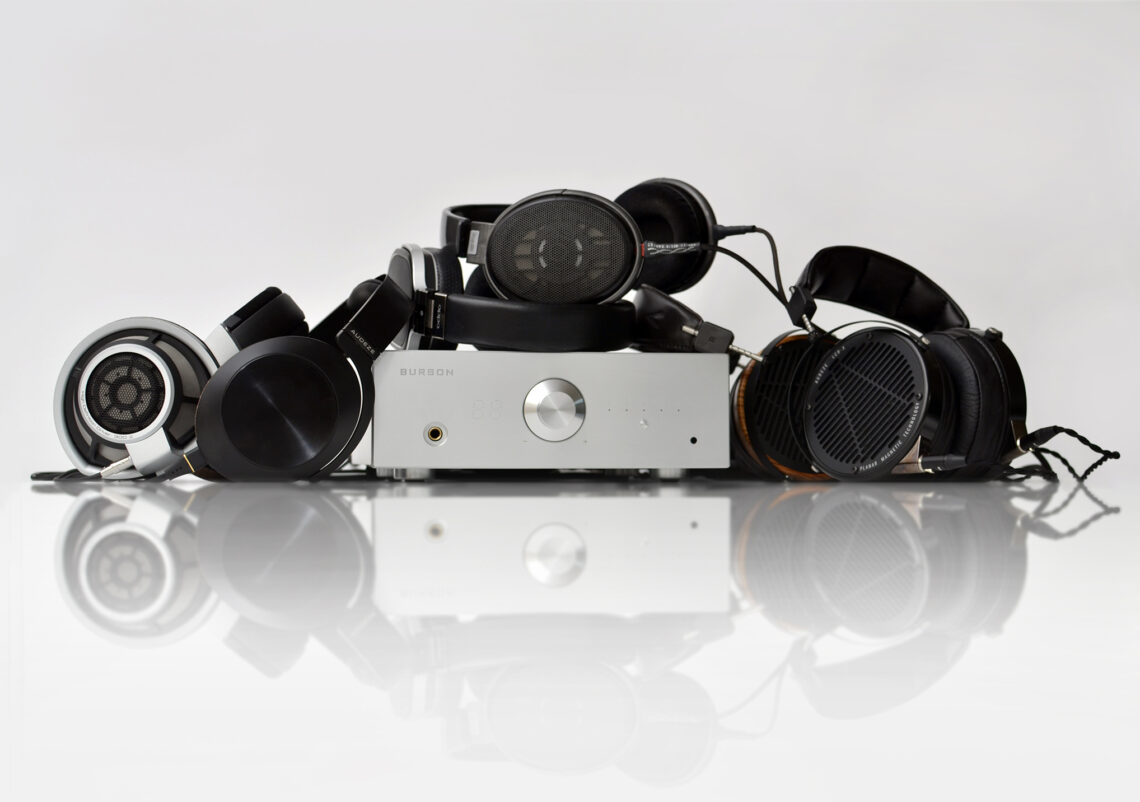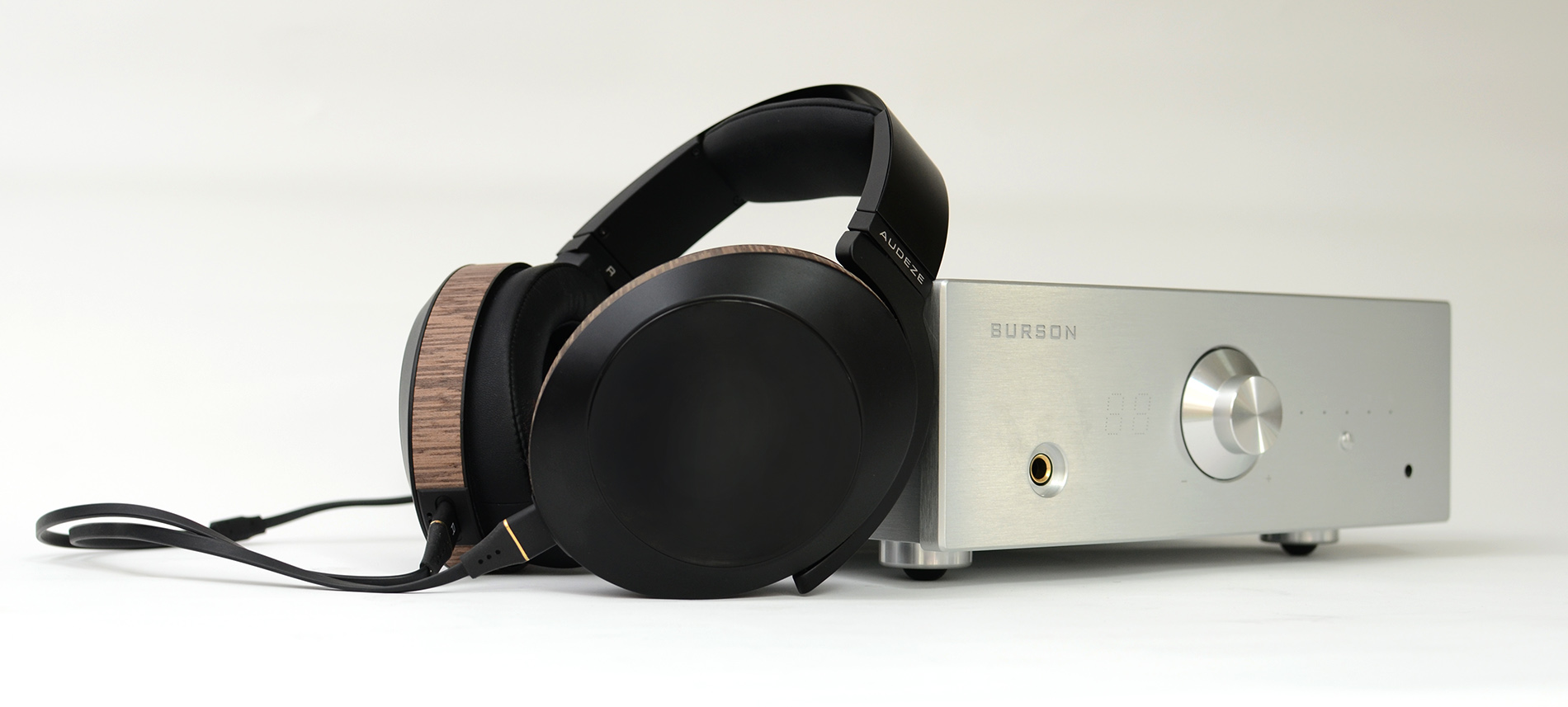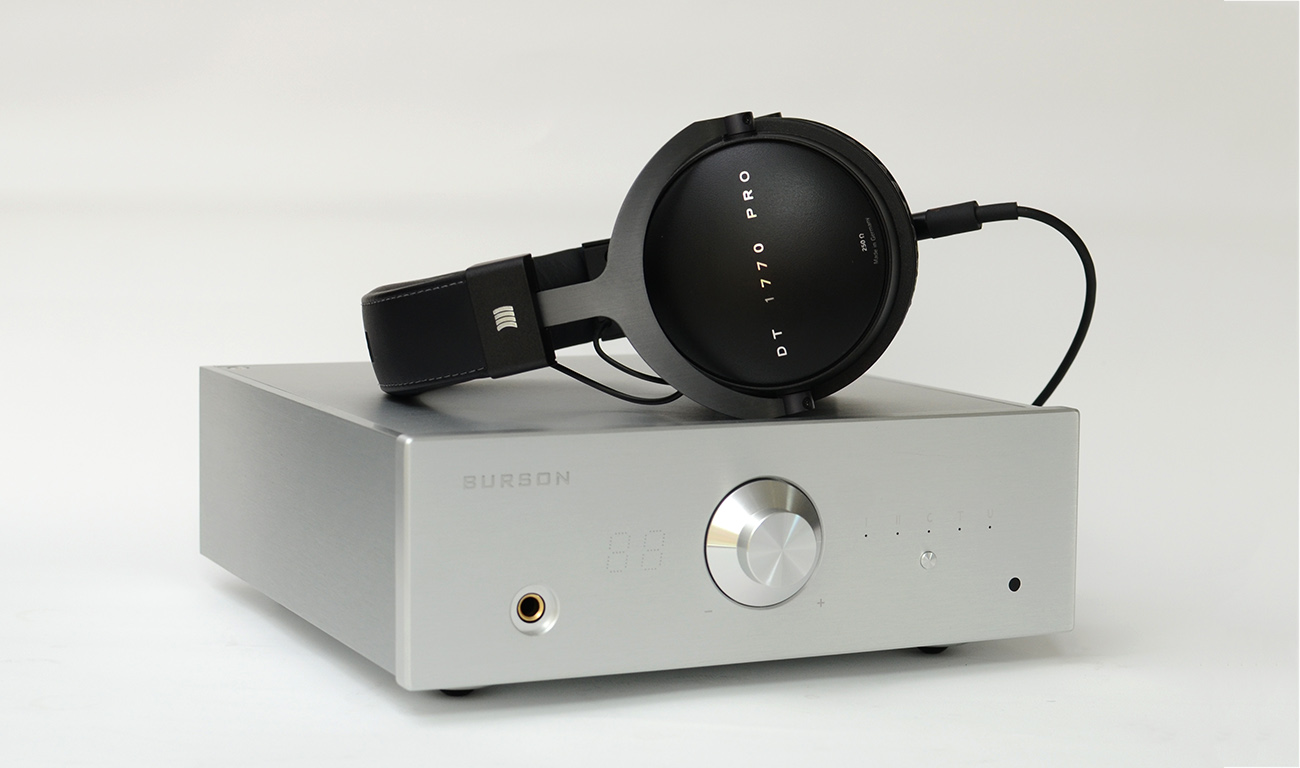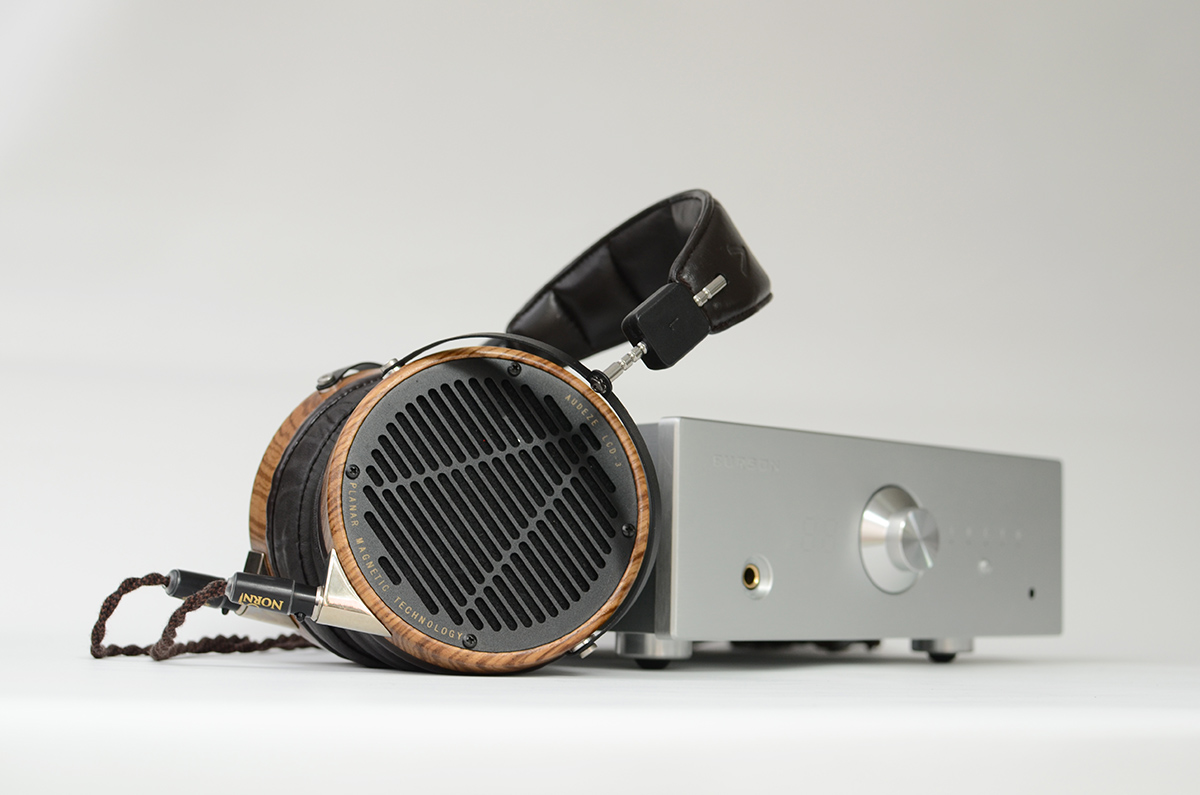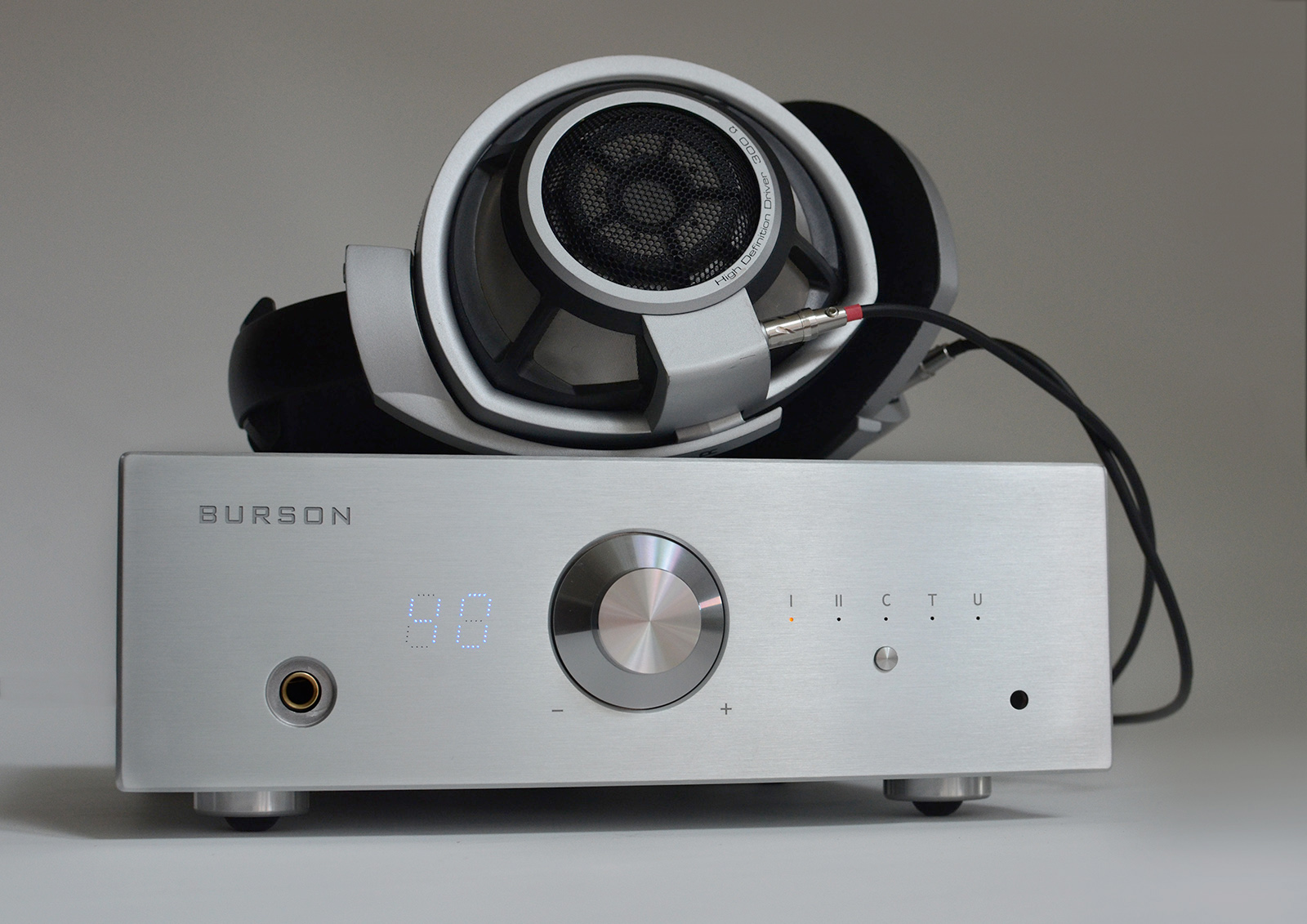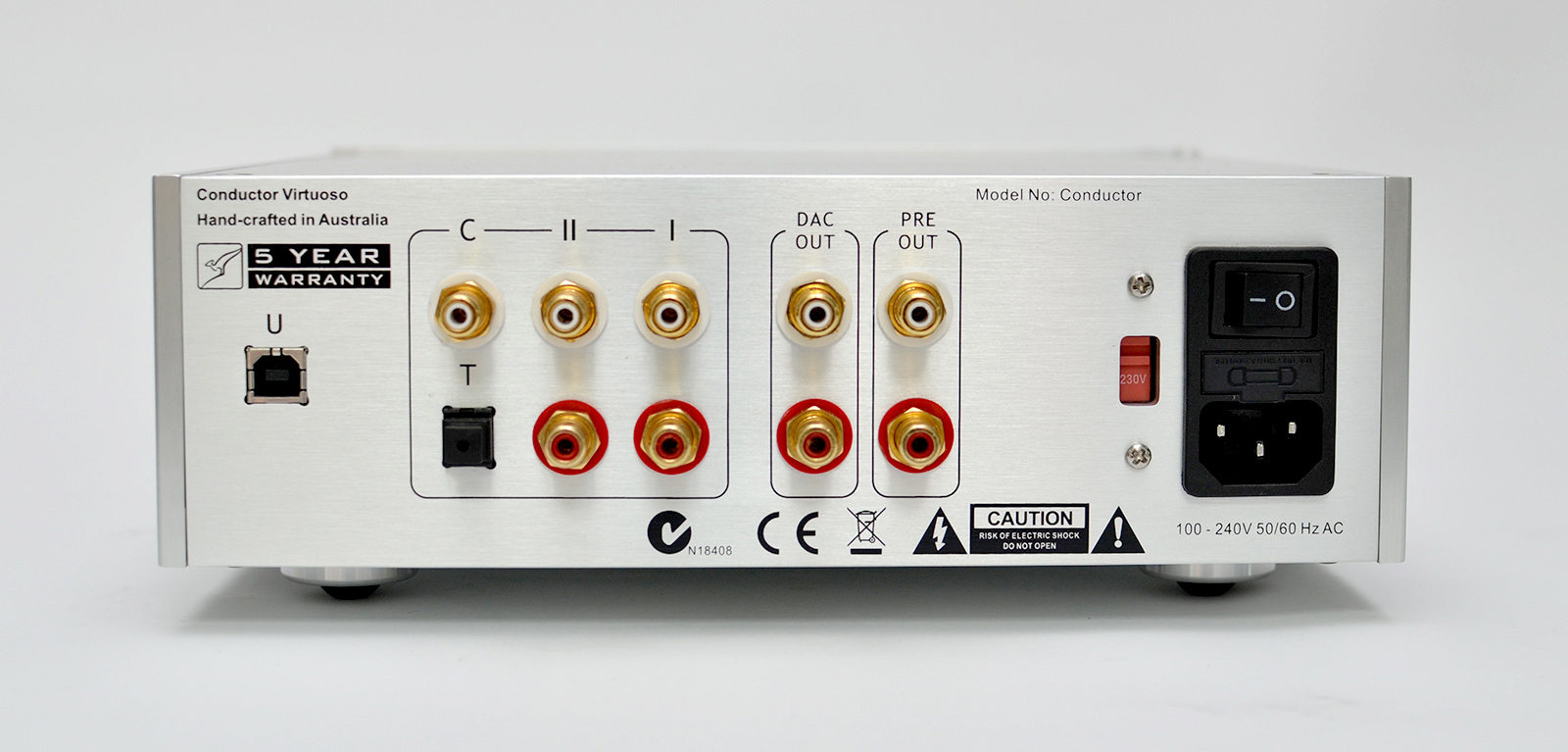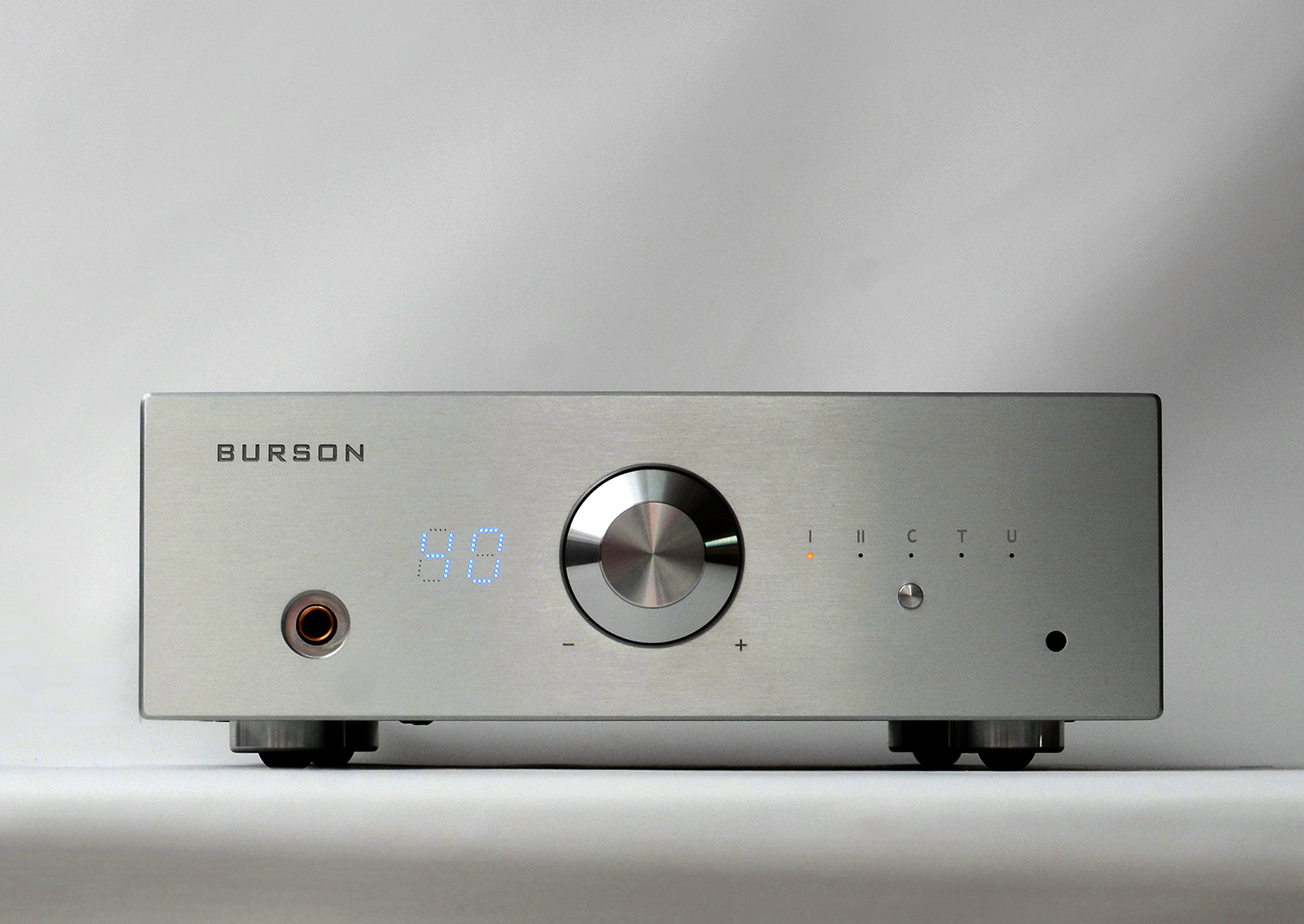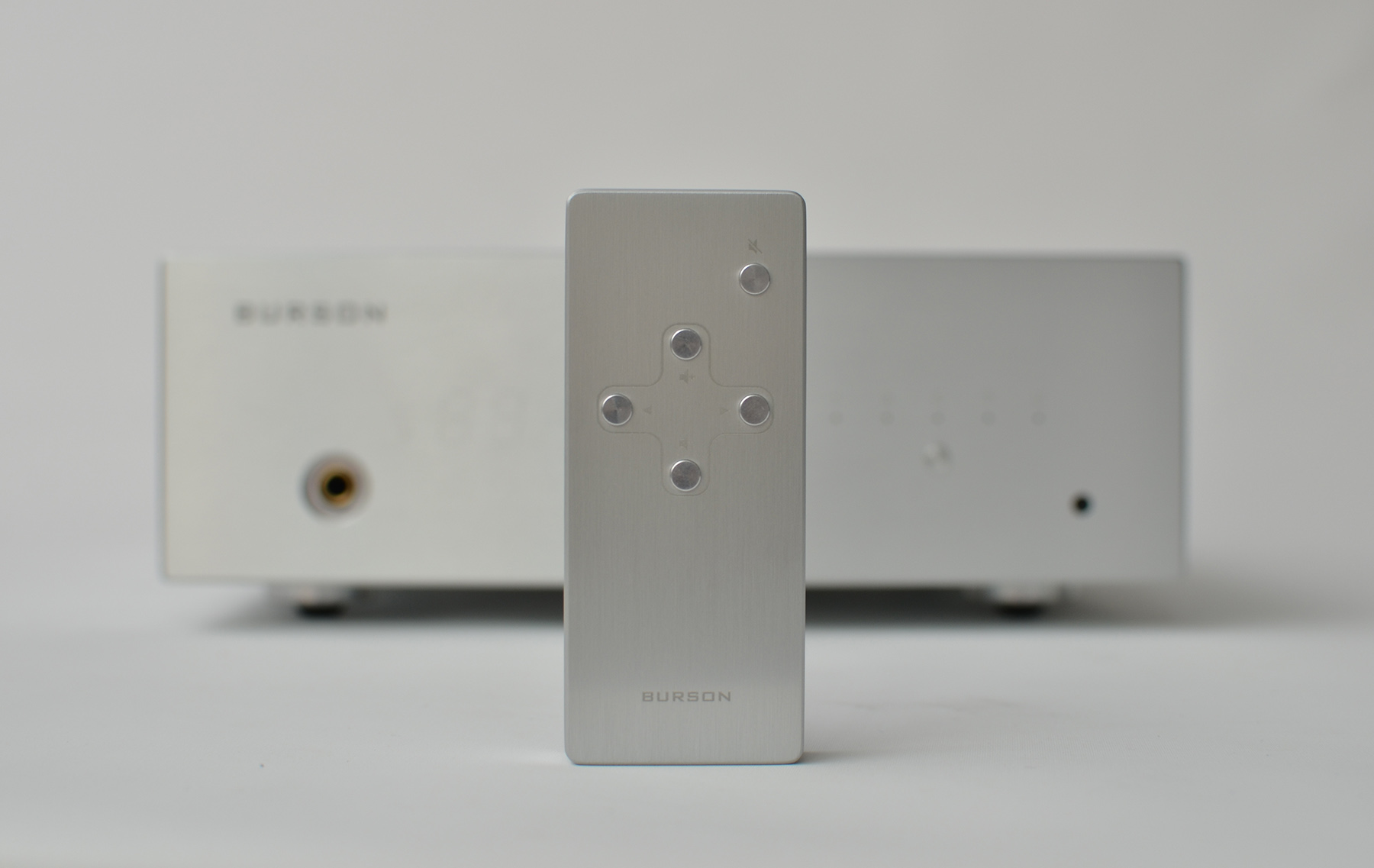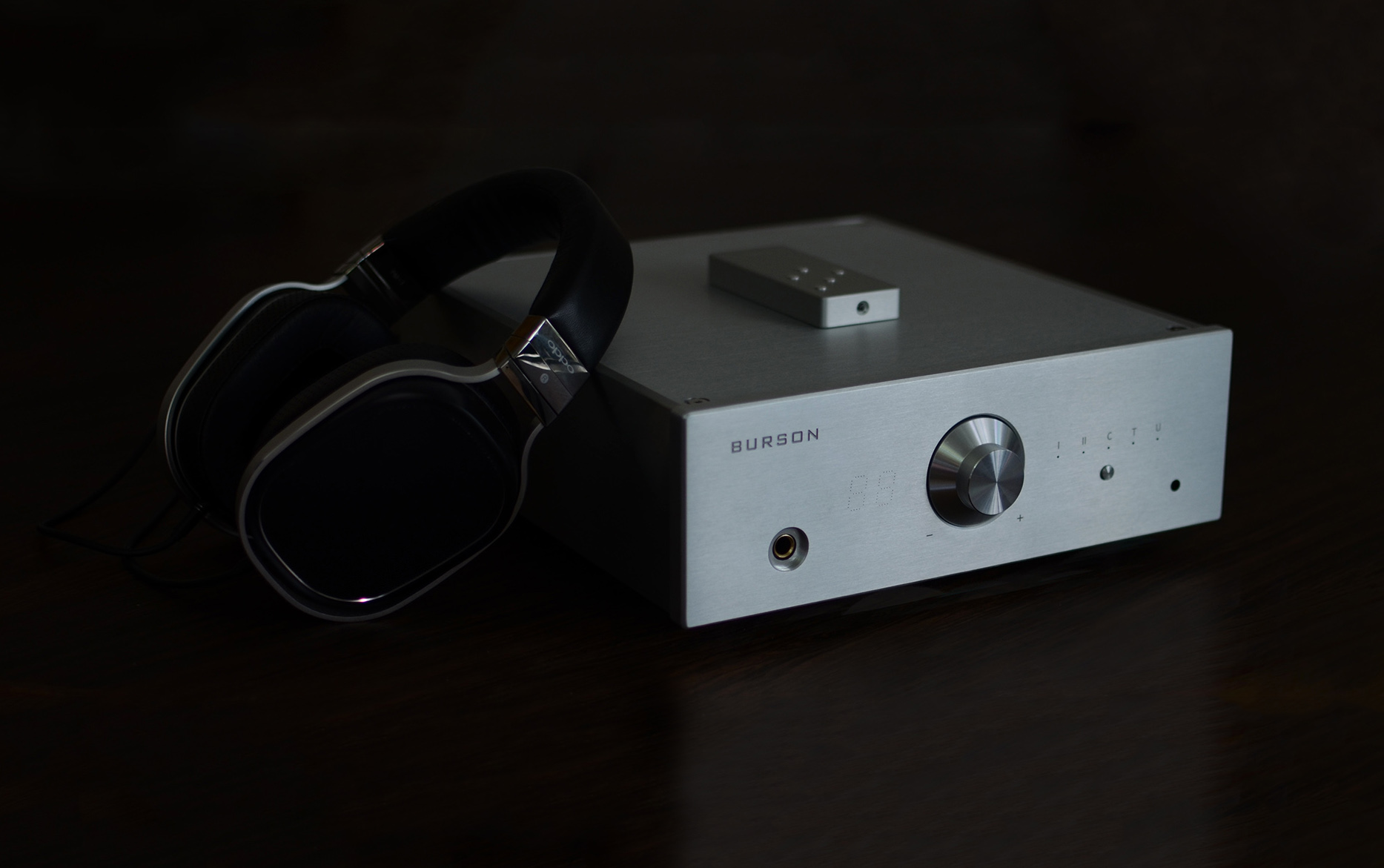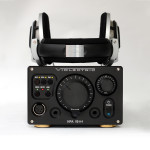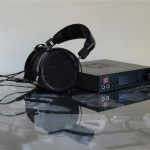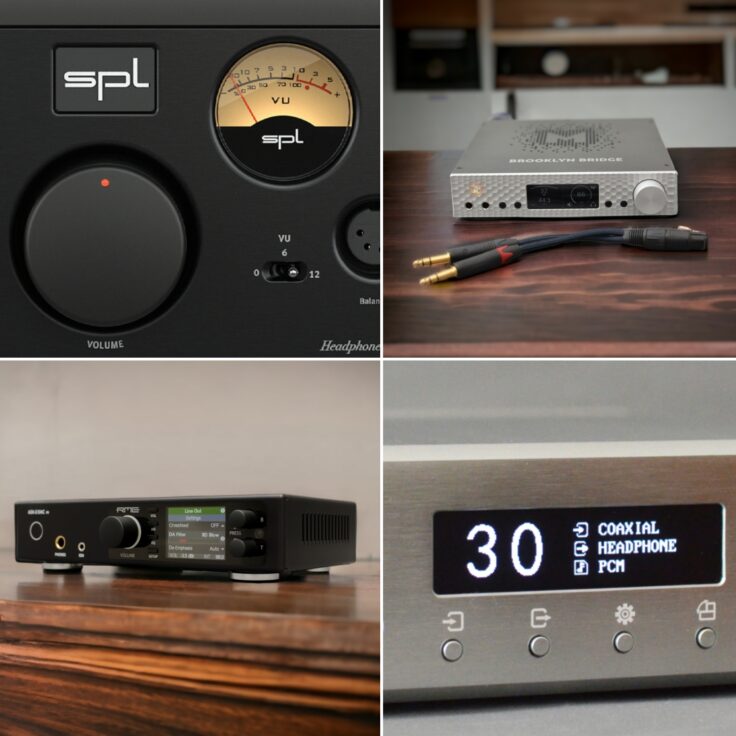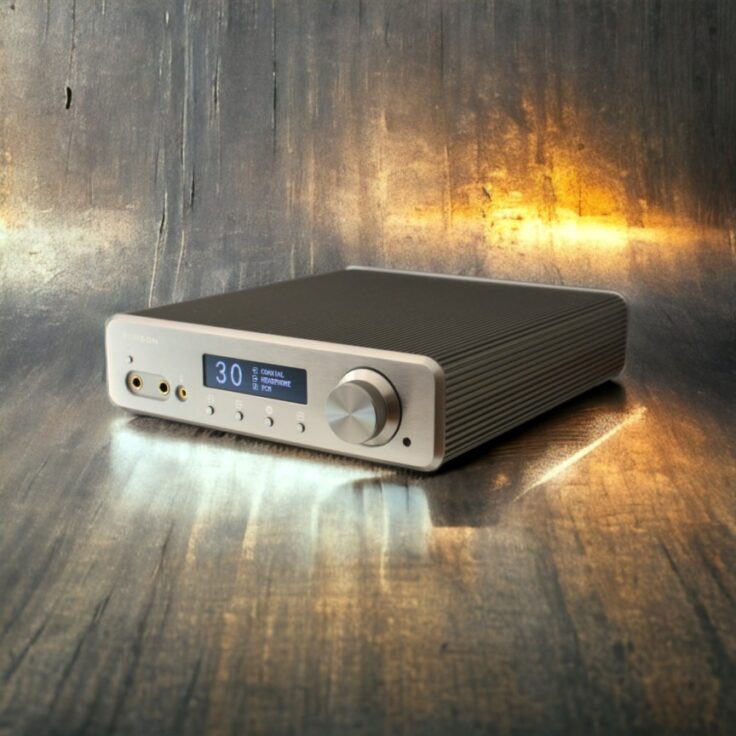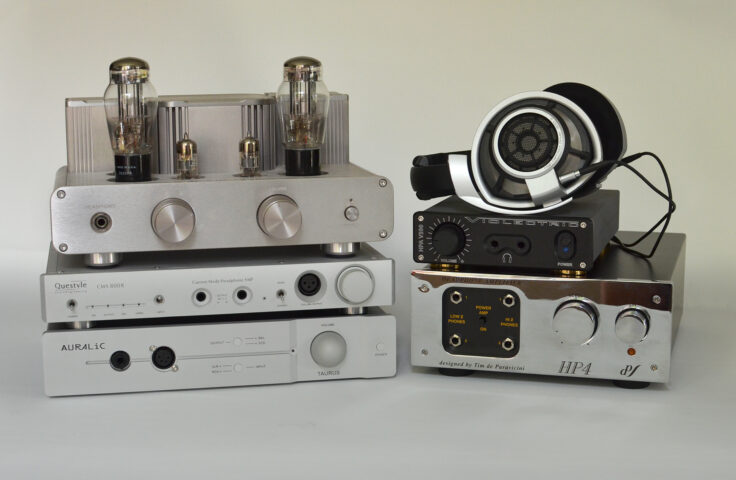Introduction
Burson Audio has been making good and reasonably priced headphone amplifiers for some years now, and the Conductor has been their flagship for three generations. The first one I reviewed three years ago. It was essentially a Soloist with a built in DAC. The next generation was called the Conductor Virtuoso, and its main upgrade was a new volume control with a remote, and adding the characteristic LED dot display front. The third and current generation is called the Conductor V2+. It has kept the Virtuoso looks, but changed on the inside, making the amp more powerful, and adding a brand new DAC-section. Another change is that you now can have the Conductor without a DAC, it is then called just” Conductor V2”. The “+” is thus indicating the DAC. There is now just one DAC card to choose from, on the original there were two.
I know – it is a bit confusing, but this is the simple version. Leaving their strategy of offering a variety of versions at different price points, Burson now has simplified their line-up: The Soloist SL mk2 is a pure headphone amp, the Conductor V2 is a headphone amp and a pre-amp, and the Conductor V2+ is a headphone amp, a pre-amp and a DAC.
Since the V2+ is a V2 with a DAC, this review is about both the V2 and the V2+. I will compare the amp section and the dac section to other amps and DACs separately , and also as a stand alone unit to other dac-amps. I will comment on which DAC’s I use as we go.
Technicalities
I tend not to focus too much on technical issues in my reviews. Technical issues are immensely important when making stuff, and gives you a general idea of the performance. But my time is best spent on listening to the result. I don’t feel the need to recite all of the producers tech-talk, nor am I competent to discuss too deeply what it means. I listen and compare, that’s what I do. But still, I assume some readers would like a brief overview:
The Burson Conductor V2+ is a class-A amplifier that gives you a rated 4 Watts in 32 ohm, and 0.5 Watts in 300 ohm. The headphone output impedance is 3 ohms. The DAC is based on a Sabre 32 and supports DSD, the XMOS 6 core USB module is Windows, Mac, iOS and Android compatible. The analog control is a 100 step Burr Brown PGA2310. However, when running digital audio, the Sabre 32 handles the volume on its own – no analog volume control involved. There are two analog inputs, and three digital: Coax, Toslink and USB. There are two outputs, one from the analog preamp section, and one directly from the DAC. Be aware that the digital output (DAC out) still is volume controlled by the built in Sabre volume control, and there is no way to set it at a fixed full volume. This might be an issue if you want to use it as a source for your integrated amp and you want to use the volume control on the integrated. But the Conductor has a remote and multiple inputs, and most would use the Conductor as a pre-amp anyway – at least, that’s what Burson probably thought. They say they added the DAC-out to bypass the analog volume. But that is done automatically when you use the headphone output, so I don’t really understand why they did it that way. I would have liked the ability to have a fixed volume output, but otherwise, this thing seems to have all things going for it on paper. It is also very solidly and impressively built.
Initial impressions
I first put on the Audeze EL-8 Closed version, and immediately liked what I heard: Tight, yet warm and engaging sound. Moving on to the HD650, it still felt really good, so did the DT1770PRO, and the Oppo PM1 felt snappy, with a nice soundstage. I often feel that the Oppo is holding something back, but with the Conductor I enjoyed it more than ever. So far, I was really impressed with the Conductor.
When I plugged in the Fostex TH-900, however, I was disappointed. There was an audible hiss, louder than when I plug in my Monk earbuds. So the TH-900 is not for the Conductor. Burson says it is supposed to be that way, it is a by product of the powerful amp. The LCD-X, another quite sensitive, low impedance headphone, has some hiss too, but I didn’t notice it until I really listened for it. I enjoyed the LCD-X for many hours before discovering the hiss and basically it was not a problem for me.
Having gotten a really good first impression of its capabilities (and put away the TH-900s..), I went on to comparing the Conductor V2+ to other stuff in my usual side-by-side, track-by-track comparison scheme.
Conductor V2+ vs Sennheiser HDVD 800
The Sennheiser HDVD 800 is a very sleek looking DAC/Amp that has been around for quite some time now. But I find it to be quite a decent package for the right headphones. It is a great looking amp and in the same price range as the Conductor. This fall it will be complemented by the more expensive but similar HDVD 850. Sennheiser says the HDVD 800 will remain in their product line for some time.
For this comparison I used the onboard DAC for each amplifier.
Sennheiser HD800
You Are Here (Album) – Fred Firth: Starting out with the Conductor, this experimental album sounds terrific. Spacious and with authority. All the sounds have body, tactility, texture and are clearly defined in space. Switching to the HDVD800, I notice that it is equally good and have to call it a tie.
Call the Police – LCD Sound System: Most noticeable is that the HD800 has more bass with HDVD800, which also has a darker presentation in general.
Those Thoughts – Dan Sartain: The Conductor is both clearer and more mid centric. I actually find the HDVD800 a bit retracted in the midrange on this track, it is slightly muffled sounding in direct comparison.
Army Of Me – Björk: Again, the Conductor comes out a bit clearer and crisper sounding, the HDVD800 a bit more laid back, but with slightly more bass presence.
Never Forget The Good Ones – Solveig Slettahjell: The solo female vocals in the opening are noticeably clearer with the Conductor. Still smooth and delicious, just a bit clearer.
Ride – Wild Nothing: The bass is more satisfying with the HDVD800, it feels like it digs a bit deeper. On this track that makes the difference.
Midnight City – M83: Again, the HDVD800 comes out a bit beefier, the Conductor a bit brighter and more mid centric. Don’t know which to prefer here.
Holberg Suite, Op. 40; I Prelude – 1B1 & Jan Bjøranger: Starting out with the HDVD800 and switching to the Conductor, this all string piece strikes me as significantly more nuanced with the latter. The tiny gentle sounds from the string ensemble is more delicate – they are painted with a wider specter of color, so to speak.
Spring – Vivaldi Max Richter: Another string piece, same result. The strings are more natural and alive sounding with the Conductor.
I went on to connect the Conductor DAC to the HDVD800 and compared the two DACs using the Sennheiser amplifier. I discovered that what made the most difference between these two units isn’t necessarily the amplifier section: When comparing the Conductor’s DAC to the Sennheisers DAC I get a similar result as when comparing them as standalone units. It was very noticeable with both string pieces mentioned above. There is just more micro detail with the Conductor DAC. Going back through my playlist I continue to find the Conductor DAC to be more revealing, but the difference is not as easily heard with the non-acoustic music on my playlist. The Conductor DAC is definitely better, and makes up a big bunch of the perceived difference in clarity between the two DAC/amps.
Sennheiser HD700
Never Forget The Good Ones – Solveig Slettahjell: The Conductor is more up front in the midrange, the HDVD800 smoother. On this track, I favor the HDVD800.
The Water Lets You In (“Bloodline” Main Title Theme): Again, the Conductor is sharper cut and more forward in the midrange and feels crisper, but less full. HDVD800 is smoother. Different flavors.
Midnight City – M83: The Conductor sounds a bit tidier.
Aquela Mulher – Vinicius Cantuaria: The Conductor is clearer, but the HDVD800 seems to have better bass, it digs deeper with more nuance.
Sennheiser HD650
Aquela Mulher – Vinicius Cantuaria: The Conductor’s crispness suits the HD650 well. HDVD800 is smoother. I always found it good with the HD650. I feel the bass is better with the HDVD800, as I did with the HD700.
Overgrown – James Blake: The smoothness of the HDVD800 is hard to resist. But if you want to crisp up the HD650, the Conductor certainly does a good job.
Spring – Vivaldi, Max Richter: The Conductor is again crisper, the HDVD800 smoother. Both very nice.
Beyerdynamic T1
Winter 1 – Vivaldi 4 Seasons: Since I previously have found the HDVD800 to be a very good amp for the T1 mk1, I was not expecting the Conductor to come out on top. But it did. It just feels a bit clearer, but not unpleasantly brighter.
Gilimanuk – Nils Petter Molvær: Again, the Conductor is more delicate, with more micro detail. It’s DAC probably makes most the difference. But I must note that the HDVD800 has a slightly darker and smoother presentation that is quite appealing on its own terms.
Dualist – Ola Kvernberg: The HDVD800 has a smoother style that makes it easier to play louder, the Conductor is better at extracting the small details.
Morning Bell – Radiohead: This track is better with the HDVD800. It gets drier and more unpleasant with the Conductor, as it does with many amps.
Lower impedance cans
With Shure SRH-1840 and AKG K7101, the HDVD800 is noticeably darker, quite a bit over-damped, it seems. The LCD-2 also is darker sounding, but not by that much – which makes sense since planars tend to be less picky about output impedances. But still, with regards to lower impedance performance headphones, the Conductor always comes out on top.
Conclusion – HDVD800 vs Conductor V2+
The Conductor has a better DAC. Its amp section tends to be clearer and brighter (in a positive way), it has a more lively midrange presentation and has a very slightly thinner bass with several of the headphones I tried. Even though I prefered the HDVD 800 on some tracks with some headphones, I prefer the Conductor V2+ overall, also for the Sennheiser headphones.
The Conductor V2+ vs Violectric V200/V800
There are not too many great DAC/Amps out there, but the Violectric V200 stacked with the matching V800 (or V850) is a great combo. For the comparisons below, I used the V800 for the V200 and the built in DAC for the Conductor.
Audeze LCD-3
Midnight City – M83: The Conductor is clearer, tighter, more detailed and dynamic on this quite complex track with lots of layers. The Violectric rig is more laid back, and still good. Smoother is maybe the right word.
Villfugl – In the Country & Frida Ånnevik: Again, the Violectric rig is good but the Conductor is clearer, crisper, more detailed.
Holberg Suite (for string orchestra), Op. 40; I Prelude – 1B1 & Jan Bjøranger: Here, the difference is less obvious, it’s more subtle. The Violectrics have a nice slightly fuller tonality that weighs up for the slight loss in detail and brightness.
Pledge For Peace – Chick Corea: The Violectric has a fatter, smoother signature, and often it comes down to subjective preferences between them, which is very obvious with this track.
The sound signature variation is bigger between the amps than the DACs. Running the DACs through the Conductor and switching back and forth, reveals that I have to adjust the volume 3 steps up for the V800. The Conductor DAC sounds maybe slightly crisper, but they are really close.
Audeze EL-8C
This is the first headphone I plugged into the Conductor, and I immediately found them to sound great together. And it seems the first impression holds.
Mi Declaracion – Vinicius Cantuaria: It sounds good with the Violectric, but switching to the Conductor, things tighten up, gets better focused, sounds cleaner and less fuzzy.
Never Forget The Good Ones – Solveig Slettahjell: The beautifully slow female vocals are smooth and gentle with the Violectric. But there are smooth enough with the Conductor, and it’s extra clarity and texture makes me prefer it.
The amp matters more than the DAC with the EL-8C too. The DACs sound quite similar when I correct the volume two or three steps up for the V800.
Sennheiser HD800
The Violectric V200 has shown to be a great amplifier at its price point for the HD800, and thus I am eager to see how the Conductor compares:
Spontanious Compositorius – Thomas Agergaard: This beautiful little piece consists of a solo saxophone, accompanied by percussion mainly in the form of bells, and some acoustic bass at the end. It sounds really, really good with the spacious HD800. Both rigs are great. The Violectric feels smoother and darker, the Conductor has a bit more of that bell ringing and a little bit less bass.
Army Of Me – Björk: The two sounds remarkably similar, but the Violectric has slightly more bass presence.
Mississippi Rising – Floratone: Same thing here. Both sound great. The Conductor is a tad shy in the bass, but that’s only something I notice in direct comparison.
Midnight City – M83: The Conductor really keeps up with the Violectric rig, but again, that bass is a bit shy. But detail and dynamics are very good indeed.
Beyerdynamic T1
This time using the Master 7 DAC for both amps. It becomes clear that also with the Beyerdynaimc T1, the Conductor stands comparison to the Violectric multi-talent. With Fleet Foxes’ “Ragged Wood” the Conductor sounds less fuzzy, but with a similarly pleasant sound signature. Radiohead’s “Morning Bell”, which often sounds a bit painful with the T1, sounds better – in a a bit more toned down way – with the V200, and drier and thinner on the Conductor. However, I have heard far worse with this special track. Playing more music and going back and forth, I can conclude that all in all, the Conductor fares very well.
Burson Conductor V2+ vs Questyle CMA800R + Audio-gd Master 7
Sennheiser HD800
Rigging up my best DAC, the Audio-gd Master 7 to the Questyle CMA800R and hooking up the HD800, there is an immediate difference. But keeping in mind that each of the components cost more than the Conductor, one should expect nothing less. Rather I expected the difference to be far greater. Generally I find the Questyle/Master7 combo to be a bit less up front in the mids, and with more nuance and image depth. But it really depends on the music with how much ease I can identify real differences.
Oppo PM-1
There is also an immediate difference with the OPPO PM1:
The Contest – The Sticks: The most noticeable is that the mid bass is fuller with the Conductor. It seems more lively, but there is more detail and ease with the more expensive combo.
Nikoniko – Helge Lien Trio: Same here, the Conductor comes out a bit beefier, the Questyle/Master7 is a bit more clear, nuanced, refined. But the difference isn’t very big.
It Could Be Sweet – Portishead: Really hard to put my finger on anything significant. Slightly better image depth, and detail with the Questyle/Master7 .
Essentially, going back and forth between the Questyle/Master7 and the Conductor, I can conclude that even if there is a difference, I often perceive it as minor difference. Considering that the Conductor is way less than half the price, I would find it hard to justify the extra cost.
Beyerdynamic T1
I never found the Beyerdynamic T1 to be a good match for the Questyle for some reason, but I try it out in comparison with the Conductor nonetheless. And sure enough, the T1 is bright and a bit dry with the Questyle, and significantly warmer and more pleasant with the Conductor.
Hifiman HE-1000
I run several tracks without finding especially significant differences to report. But with the busy tune Ragged Wood by Fleet Foxes, I clearly hear the difference. The Questyle is less busy, definitely sounding, tidier. This was a feeling I had with previous tracks too, but really not obvious before I found that right track.
Conclusion
Basically I find the Questyle/Master7 combo better, but not at all as superior as I expected. Really great performance from the Burson Conductor V2+.
Auralic Taurus vs Burson Conductor V2
For this comparison I used the Audio-gd Master 7 as a source for both, unless other is stated.
Shure SRH-1840
This headphone usually sounds great with the Auralic Taurus, so I found it natural to try out how it compares to the Conductor.
Solo – Frank Ocean: The Conductor is at the same level as the Taurus here, actually adding slightly more nice midrange warmth to the vocals.
I listen to more tracks with similar results. The difference between the amps is minor with this headphone.
Sennheiser HD800
Auralic Taurus in balanced mode is a great amplifier for the HD800.
Deep as Love – Tord Gustavsen: Using the Audio-gd Master 7 DAC with both, I struggle to find significant differences. Both are delicate and lovely textured, the gentle piano pleasantly painted.
Switching to the on-board DAC, the Conductor gets a bit more forward sounding and less easy-flow sounding than with the Master 7.
Lusty – Lamb: Again I struggle to identify clear differences. Maybe the Taurus is a tad more detailed, especially in the opening. Also, again I find the Master 7 DAC to be better in a more relaxed, easy flowing way than the on-board DAC. But the difference is far less than what could be expected when considering the wast price difference.
After more listening and a/b-ing with various music, the pattern was the same. The two amps performed very equally, but there was a small preference for the Taurus. The Master 7 DAC was always better than the Burson.
Beyerdynamic T1
Auralic Taurus drives the T1 well, but the Conductor has this extra presence in the mids that I really like. They are not very different, so I won’t spend much space on it, but in conclusion, the Conductor has a good way with the T1.
Hifiman HE-6
The Taurus does a decent job of driving the HE-6, even though HE-6 purists will insist on a dedicated speaker amp. But it is not doing it justice. Simply put – the Conductor V2 cannot compete here.
Conductor V2 vs Audio-gd Master 9
Hifiman HE-1000
Mi Declaracion – Vinicius Cantuaria: I like the HE-1000 with the Conductor. But with the Audio-gd 9, there is more calm and ease. Not a night and day difference, but significant. I run the Master 7 DAC to both the Master 9 and the Conductor, and surprisingly I find the amp to matter more than the DAC. Which adds to my sense of the Conductor having a great DAC.
Gilmanouk – Molvær: This track really didn’t bring out the difference between the two amps.
Ragged Wood – Fleet Foxes: The differences aren’t really big, but the Master 9 is a bit clearer.
Violin Concerto in D Minor, RV 813 – 1 and 3 – The Young Vivaldi – Ensemble Modo Antiquo
Strings are slightly sharper cut and better textured with the Master 9. But the Conductor is not far behind and it must be said, a step up on the volume reveals how small the margins are. Using the onboard DAC on the Conductor gives the Audio-gd rig a bit more leeway, but still they are very close.
Sue – David Bowie: With the fast drums especially, the Audio-gd definitely excels in direct comparison. Slightly more open sounding.
Conclusion All in all, given the Master 9’s extra power and higher cost (999 usd for the V2 without DAC vs 1480 usd for the Master 9) I am really impressed with the Conductor’s performance, but I prefer the Master 9.
Note: I used the balanced inputs and ouputs of the Master 9. The Conductor, of course is unbalanced. Same source (Master 7).
Conductor V2 vs Violectric V281
It is always interesting to compare gear to stuff that is far above its price range. So here’s a brief comparison to the V281, of which I recently wrote a quite favorable review.
Hifiman HE-1000
Europe Is Lost – Kate Tempest: Great running bass loop on this one. It is clearly tighter and better textured with the V281. Conductor is absolutely ok, but the Violectric proves you get something more for paying more than twice as much. Vocals are crisper, background is blacker, staging more precise.
Fountain Stairs – Deerhunter: Basically, the Conductor is a bit softer, less defined.
Monument – Röyksopp: Again, V281 clearer and tighter. But the tonality is very similar and frankly I am impressed with the Conductor for keeping up as good as it does.
Other Headphones
I did a brief comparison between the Conductor V2 and the V281 with the Audeze LCD-3, the Sennheiser HD800 and the Oppo PM1. With all of them the Violectric was a bit tighter and clear across the range but the tonality was very similar. I was frankly very impressed with the Conductor because it was so close to the Violectric that is more than twice as expensive, and has proven to be a very solid performer with every headphone I have tried. The V281 is amongst my favorites with the HD800, for instance.
Note: I used the balanced inputs and ouputs of the V281. The Conductor, of course is unbalanced. Same source (Master 7).
Conductor V2+ vs Moon 230HAD
I did a thorough comparison with the Moon 230HAD, which can be read in separate review on this site (work in progress, link coming). The takeaway is essentially that i find the amplifier sections different but equal. The Moon is definitely warmer sounding, but also less tight. With the right headphones it can shine, but so can the Conductor. With the DAC sections, however, there is no contest, the Conductor is the king.
The DAC
Rigging up the Audio-gd Master 9 amp with both the Master 7 and Conductor V2+ DACs connected, I start to listen to some music to identify the differences.
First out is Frank Ocean’s “Blonde” album. The two DACs have surprisingly similar sound signature, considering the internal differences. But what is clear is that the Master 7 is more precise. The best example might be with these small, digital percussion sounds in the track called “Nights” at 3:40. These are clearly more distinct, more narrowly presented in the sound space. And this goes for all instruments, the more distinct they are, the more distinct they sound with the Master 7. But the difference is still quite small, leaving me impressed with the Conductor.
Moving on to “Mi Declaracion” by Vinicius Cantuaria, it becomes clear that the M7 has significantly better bass definition when you listen closely. The next track is “Silver Sun, Ember Sky” by Marvel Machine: It is the same here, and there is better definition in general with the Master 7.
I run some tracks from the excellent string oriented “Young Vivaldi” album, without actually hearing any big differences. With the more complex “Midnight City” by M83, I hear how the Master 7 maintains a tidier and cleaner presentation.
So basically, I first have to say that these DACs will sound very similar to the casual listener. But when you really listen into the music, the Audio-gd Master 7 always comes out on top. The margin, however, varies quite a lot, and the Conductor clearly gives a lot of value for your money. The difference between the non-DAC Conductor V2 and the V2+ is less than a fourth the price of a Master 7.
When compared to lesser DACs than the Master 7, the Conductor also proves its worth. I find it to perform similarly to the V800 with spdif, and the Burson has a better USB module. Compared to the DAC module in the Moon 230HAD, the Conductor never left me in doubt and always came out on top.
I tried both the coax and the USB on the Conductor, and there was no significant difference between running my good old Squeezebox Touch through the W4S “Remedy”-re-clocker into the coax, and my Windows 10 computer into the USB – except that the USB was a bit louder. If anything I’d say the USB sounded slightly better.
Main Conclusion
I really, really like the Burson Conductor V2+. The first Conductor was a good all-in one solution, but it didn’t feel fabulous. They fixed some issues with the Virtuoso, especially the volume control. But with the third generation, Burson really made the Conductor a product that excites.
It is a great amplifier in a beautiful and functional package. It has a very nicely crafted remote control and multiple inputs. But what makes it stand out the most is that the DAC is such a killer. Often, the only advantage with “all in one” boxes is aesthetics. But with the Burson Conductor V2+, the DAC seems to me to really perform well above the price premium. The V2 is a great amplifier – already quite aggressively priced given its performance and functionality. With such a good DAC onboard, the V2+ is one of the very few great headamp/preamp/dac-products in its price range.
Technical Specifications:
Source: Burson Audio
Measurements
Input impedance: 35 KOhms
Frequency response: ± 1 dB 0 – 56Khz
THD: <0.003%
Input impedance: >8K Ohm
Output impedance (Headphone Amp): 3 Ohm
Output impedance (Pre Out / DAC Out): 1 Ohm / 25 Ohm
Inputs: 2 x RCA line level input
Outputs: 1 x RCA Pre Amp, 1 x Headphone Jack
Impedance/Power/Signal to Noise Ratio/Separation
16 Ohm 8.2W 92db 99 %
32 Ohm 4W 95db 99 %
100 Ohm 1.46W 94db 99 %
150 Ohm 1W 94db 99 %
300 Ohm 0.5W 95db 99.5%
DAC Spec
Channel Separation: 142 dB @ 1KHz, 135 dB @ 20KHz
THD+N: 0.0005% @ 1KHz, 0dBFS
COAX & Toslink / SPDIF : 24 bits / 44.1K, 48K, 88.2K, 96K, 176.4K, 192KHz
USB Spec
Desktop OS: Windows XP, 7, 8, 10 Mac OSX
Desktop OS: iOS* , Android (require OTG support)
PCM Support: PCM ? 384kHz @ 16, 24 or 32bits
Native DSD: Native DSD 64 / 128 / 256
DSD over PCM: DoP64 / DoP128 / DoP256
Asynchronous Isochronous
Package Content
1 x Conductor V2+ Headphone amp / Pre-Amp / USB DAC
1 x Remote Control
1 x RCA Cable
1 x Power Cable
General
Weight: app. 7 kg
Dimensions: 265mm x 255mm x 80mm


